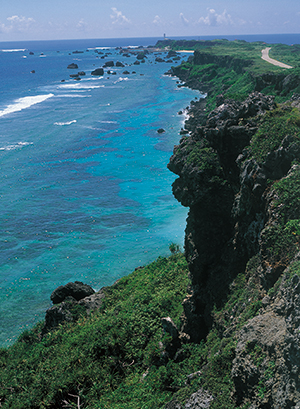 Because Okinawan cuisine is so different from mainland Japanese food, it’s easy to get sidetracked into a culinary route at the expense of exploring other aspects of Miyako-jima. By the time I arrived on the island, though, the sun was already beginning to set, making it too late for any useful sightseeing. An exploration of the restaurants of Hirara, Miyako’s main town, seemed more promising.
Because Okinawan cuisine is so different from mainland Japanese food, it’s easy to get sidetracked into a culinary route at the expense of exploring other aspects of Miyako-jima. By the time I arrived on the island, though, the sun was already beginning to set, making it too late for any useful sightseeing. An exploration of the restaurants of Hirara, Miyako’s main town, seemed more promising.
Okinawan cuisine, with its rich lashings of seafood and pork, speaks of different culinary preferences from the mainland. Snake meat courses are said to provide extra physical stamina for both sexes; ‘mimiga’ is julienned pork ear served with cucumber and dressed with vinegar. The knobbly green gourd known as ‘goya’ (bitter melon), stir-fried with egg, pork or, more likely Spam, is now eaten all over Japan.
But what of white radish pickled in black sugar, black sugar muffins, and fusion preparations like ‘wakame asparagusu,’ Ryukyu fish curry, or ‘shima tofu’ and vegetable terrine? Clearly there is a lot to choose from. I opted for the simplest of dishes on my first night: a bitter melon preparation, turmeric-marinated tofu with chard, and a freshly caught local fish, one that would have been a tropical rainbow colored specimen when taken from the sea.
Okinawans of advanced age seem to have got there through a well-balanced combination of lifestyle, healthy diet, exercise, and a conspicuous lack of stress. These sprightly folk embody the Okinawan concept of ‘nuchi gusui’ (the healing power of food). The expression cropped up regularly during my time on the islands, reminding me of the words of Dr. Tokashiki Tsuka, a physician to the King of the Ryukyus, who wrote in his 1832 ‘Textbook of Herbal Medicine,’ that “If we nourish the spirit through proper food and drink, illness will cure itself.”
Okinawan food is best sampled with a can of the local Orion beer, or better still, a glass of invigorating ‘awamori,’ a distilled rice liquor usually served on the rocks. This particular firewater is said to be the best accompaniment for ‘yagi-jiru’ (goat stew), another common southern Okinawan dish. Awamori is generally made from Thai rather than Japanese rice, the longer grain being more suitable. It is also a legacy of the old trading routes that once thrived between these islands and the countries of Southeast Asia.
I easily found a watering hole just off Nishizato-dori, Hirara’s main shopping street. The shelves were groaning under the weight of bottles of awamori with colorful labels. One of the few genuinely old wooden buildings I saw on the island, its outside boards were painted in blue, one entire wall covered in bougainvillea, a reminder of the singular character of these sub-tropical southern islands.
Miyako is the fourth-largest island in Okinawa Prefecture. The main island, a low plateau, consists of layers of elevated coral reef. The main crop of these islands seems to be the sugarcane. Miyako’s rugged coastline more than makes up for the flatness of the island, the lack of geographic features that characterizes the interior, and the almost complete absence of older Okinawan-style buildings.
Although Miyako is almost uniformly flat, bicycling or hiking the length of the island, especially in summer, would not be a very sane thing to do. I opted to rent a scooter, the perfect means of transport on this only lightly trafficked island.
As recently as 1960, there were no asphalt roads. Horses were the major form of transportation on the island. Miyako has been breeding horses since at least the 13th century. The island is something of a leader in the implementation of bio-fuels, requiring all vehicles to use a form of gasoline made from sugarcane. I can’t say I noticed the difference in the engine performance, a sign that alternative energy, at least on a small scale, can work.
The beaches along Miyako’s coastline, its most stunning feature, are far flung, so private transport is vital unless you intend to stay at one site all day. Two of the best-loved stretches of perfect, white sand are at Maehama and Sunayama. The first, located in Yonaha, is a 4 km strip the likes of which you are unlikely to see outside of Tahiti.
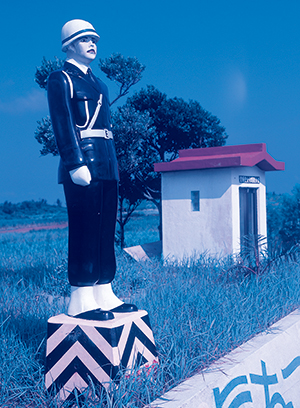 Sunayama, as the name suggests, is at the bottom of a towering sand dune. A large cavity in a cave there is a popular spot to watch the sunset through. There are even quieter beaches at Boragawa, Yoshino, and Aragusuku, where the snorkeling among coral and tropical fish is highly rated. Higashi Henna-zaki is not a beach, but a narrow 2 km-long peninsula with magnificent views along its craggy coastline. The spit of land is often full of blooming wild flowers. Nature is also on display at the Hirara City Botanical Gardens on the edge of town. Admittance to the park, an excellent introduction to the sub-tropical flora of Okinawa, is free. Many years ago, these flat islands were inundated by the ocean, wiping out all traces of snakes, so you can feel comfortable exploring the deep foliage of the gardens.
Sunayama, as the name suggests, is at the bottom of a towering sand dune. A large cavity in a cave there is a popular spot to watch the sunset through. There are even quieter beaches at Boragawa, Yoshino, and Aragusuku, where the snorkeling among coral and tropical fish is highly rated. Higashi Henna-zaki is not a beach, but a narrow 2 km-long peninsula with magnificent views along its craggy coastline. The spit of land is often full of blooming wild flowers. Nature is also on display at the Hirara City Botanical Gardens on the edge of town. Admittance to the park, an excellent introduction to the sub-tropical flora of Okinawa, is free. Many years ago, these flat islands were inundated by the ocean, wiping out all traces of snakes, so you can feel comfortable exploring the deep foliage of the gardens.
Anyone interested in Miyako-jofu, the island’s traditional weaving, should head for the Hirara City Museum, where there are several examples along with other local artifacts. For a closer look at this craft, the Miyako Traditional Art & Crafts Center not only sells local textiles, but has a workshop area where you can watch women weaving. The islanders once paid their taxes to the Ryukyu Kingdom in Miyako-jofu and black sugar. Once young people reached the height of 1.4 meters, they were eligible to make their first contribution. The Jintozeiseki, a stone column used to measure people, can be seen in Hirara. Ferries and bridges connect Miyako with a number of interesting, less visited islands in the group, such as Ikema, Kurima, Shimoji and Irabu, an island whose rugged coast is rarely visited by tourists, though fishermen haunt its shoreline.
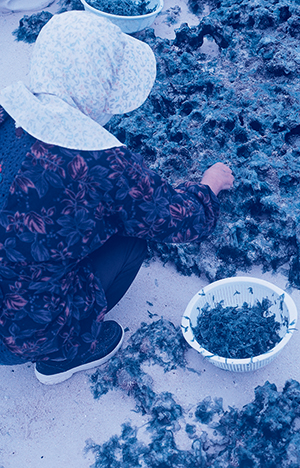 The people of Miyako have their own culture, a legacy of affinities with aboriginal Taiwanese tribes. Migrants from South East Asia likely settled there, sailing up from the Philippines and along the Chinese coast. Noting less physical war damage inflicted on these outer islands than the mainland, George H. Kerr wrote in his monumental ‘Okinawa: The History of An Island People,’ first published in 1958, that the islands “hold much promise for the archeologist, the linguist, the folklorist who would record the last faint evidence of archaic life in the Ryukyu island chain.” Delve into the sacred woods and groves, communal well sites, sarcophagi, sheltering caves and enclosures where the dead were once exposed to wind and sun, and you will find traces of that antiquity. Miyako’s population is the third largest in Okinawa. Because of its former isolation, it has its own distinctive language forms. These island people are said to be some of the friendliest folk in Okinawa. If you are lucky enough to be invited into a house, you may find yourself taking part in a local custom called ‘Otohri.’ Each guest is asked to give a small talk, after which the speaker fills everyone’s glass with awamori for a toast. It is bad form to leave before everyone has spoken, making for a boozy evening.
The people of Miyako have their own culture, a legacy of affinities with aboriginal Taiwanese tribes. Migrants from South East Asia likely settled there, sailing up from the Philippines and along the Chinese coast. Noting less physical war damage inflicted on these outer islands than the mainland, George H. Kerr wrote in his monumental ‘Okinawa: The History of An Island People,’ first published in 1958, that the islands “hold much promise for the archeologist, the linguist, the folklorist who would record the last faint evidence of archaic life in the Ryukyu island chain.” Delve into the sacred woods and groves, communal well sites, sarcophagi, sheltering caves and enclosures where the dead were once exposed to wind and sun, and you will find traces of that antiquity. Miyako’s population is the third largest in Okinawa. Because of its former isolation, it has its own distinctive language forms. These island people are said to be some of the friendliest folk in Okinawa. If you are lucky enough to be invited into a house, you may find yourself taking part in a local custom called ‘Otohri.’ Each guest is asked to give a small talk, after which the speaker fills everyone’s glass with awamori for a toast. It is bad form to leave before everyone has spoken, making for a boozy evening.
Was the environment, the long walks along the shore, the diet that went with this well-balanced ecosystem, beginning to have an effect? If a sense of comfortable oblivion, a temporary disconnect with daily life, is the definition of a good trip, Miyako Island clearly delivers. Down on its white, unpolluted beaches and blue sea borders, its easy to play the sandpiper, to forget where you came from, when you must leave.
Story & photos by Stephen Mansfield
From J SELECT Magazine, Feburary 2009

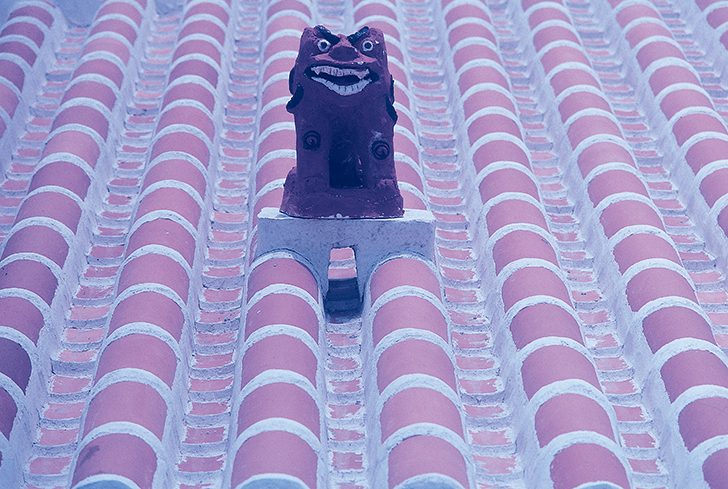

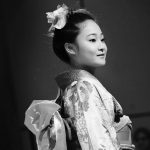
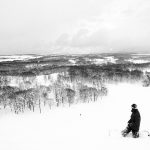
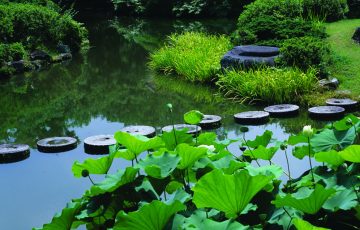
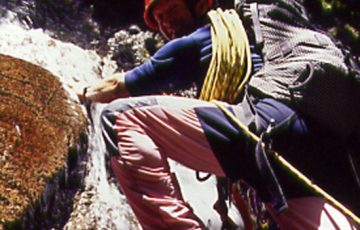
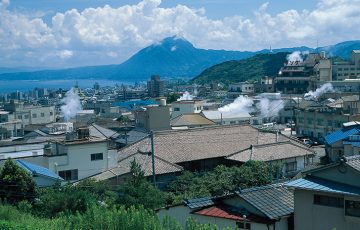
-360x230.jpeg)
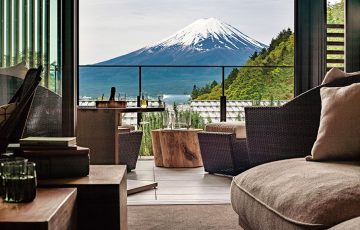

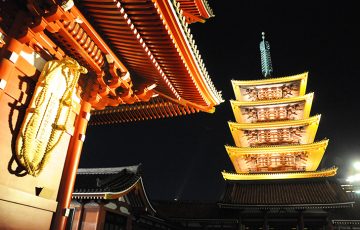
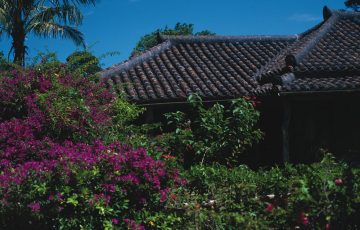


Recent Comments